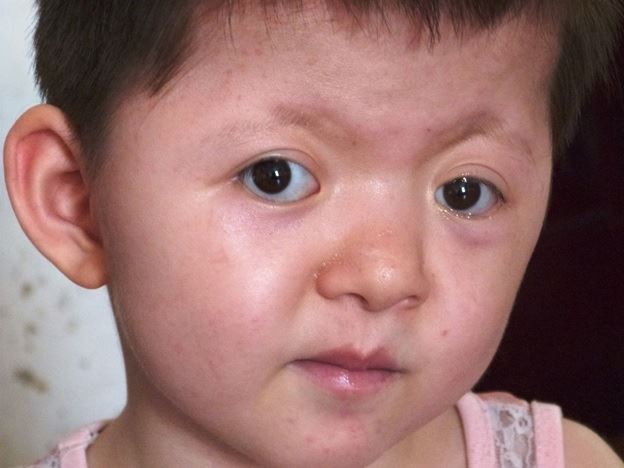Chromosomal abnormalities or chromosomal disorders are the type of genetic disorders caused due to the change in one or many chromosomes or the abnormal arrangement of the chromosomes. There are different types of chromosomal abnormalities that are as follows:
- Aneuploidy – It is a condition in which there is a loss or gain of chromosomes due to abnormal segregation of genes during cell division. It can lead to monosomy, trisomy, tetrasomy, etc.
- Polyploidy – It is a condition in which the count of the entire set of chromosomes increases due to the failure of cytokinesis in cell division. It is mostly observed in plants.
In humans, when there is an extra copy of a chromosome in one of the pairs, it is called trisomy and when one of the chromosomes from the pair is lacking, it is called monosomy.
Examples of Chromosomal Abnormalities
The most common examples of these chromosomal disorders are Down’s syndrome, Klinefelter syndrome, and Turner syndrome.
 A kid suffering from Down Syndrome
A kid suffering from Down Syndrome
Let us look at these three examples in detail:
- Down syndrome: This syndrome is a type of trisomy as there is an extra copy of chromosome 21. It is named after the person who discovered this chromosomal disorder – Langdon Down. The symptoms in a person include the following:
- The person is short and has a small and round head
- Physical and mental development is retarded
- Furrowed tongue and partially open mouth,
- Broad palm
- Klinefelter syndrome: This genetic disorder arises due to the presence of an additional X chromosome in males. Thus, resulting in a chromosome count of 47 (44 + XXY) instead of 46. The symptoms include:
- Such a person has a masculine physique but has feminine development like the development of breasts
- Such individuals are sterile, i.e.; they cannot reproduce
- Turner syndrome: Unlike Klinefelter syndrome, in this chromosomal disorder there is the absence of one X chromosome in females. Hence, decreasing the chromosomes count to 45 (44 + X0). The symptoms include the following:
- Such females are sterile
- Have rudimentary ovaries and there is the absence of secondary sexual characters.
For more detailed information about Chromosomal Abnormalities, visit BYJU’S Biology.
Also Read:
- Abnormalities of Sex Chromosomes
- Where are chromosomes found in a cell? State their function.
- Difference between Gene and Chromosome- Overview
Frequently Asked Questions
What are the 4 types of chromosomal abnormalities?
The four types of chromosomal abnormalities are deletion, duplication, transversion and translocation.
Is autism a chromosomal disorder?
Autism is better identified as a neurodegenerative disorder.
What is the rarest chromosomal disorder?
Mosaicism or trisomy of the 17th chromosome is the rarest chromosomal disorder in humans.

I want to learn here